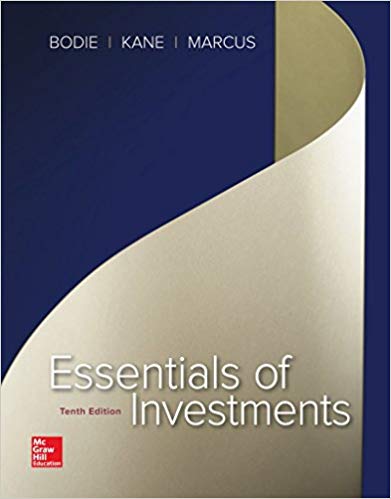Question
Ken is a credit trader working for a large investment bank on Wall Street. He is considering trading on a new General Motors Corporation (GM)
Ken is a credit trader working for a large investment bank on Wall Street. He is considering trading on a new General Motors Corporation (GM) bond. This bond, which is about to be issued, has a simple structure: it is a zero-coupon bond with one year till maturity and face value of $1,000,000. Ken has just started gathering balance-sheet information about GM:
Market capitalization: $44 bn
Total debt: $178 bn
Asset volatility: 22% per annum
Ken's assistant also just collected some information on Ford (F) which is also a big player in the US. auto industry:
Market capitalization: $30 bn
Total debt: $209 bn
Asset volatility: 14% per annum
Interestingly, Ford has also just issued a corporate bond with similar characteristics: one year to maturity, zero-coupon, face value $1,000,000. This particular bond is priced at $902,737.60, which implies a semi-annual compounding yield of 10.50% p.a.
Ken wonders if the GM bond would command a higher default premium relative to Ford and brings up the information in hand to two other traders Erica and Preston, during their daily morning meeting:
Erica thinks that Ford is heavily leveraged: their total debt is about 7 times their total equity. To this extent, GM looks much better: GM's equity is only about one fourth of its debt. Therefore, Erica argues that GM's bond should be discounted at a yield lower than 10.50% to reect their safer leverage position and lower default likelihood.
Preston agrees on that point but also highlights the big dierence in asset volatility. Although in the same line of business, for some reason, GM's asset values seem to uctuate more widely with a volatility of 22% compared to 14% for F, and this is also a source of default risk to consider. This could make GM's credit risk be higher even after taking into account their dierences in leverage. As a result, Preston thinks that they should discount GM's bond at a yield higher than the 10.50% yield that market participants require for Ford's bond.
Ken understands the points raised by his colleagues but cannot a priori come up with a decision without further quantitative analysis. He promises to come back the very next day with an answer right before the market opens.
Your job: Determine the price of the GM bond and provide Ken with a trading recommendation.
Hints:
(a) Assume the current 1-year continuously compounding risk-free rate is 2% p.a.
(b) Ken is particularly worried that he doesn't have enough information to determine GM's recovery rate. First, help him determine a reasonable proxy for the recovery rate of the US. auto industry based on the information above or any other relevant source of information.
Step by Step Solution
There are 3 Steps involved in it
Step: 1

Get Instant Access to Expert-Tailored Solutions
See step-by-step solutions with expert insights and AI powered tools for academic success
Step: 2

Step: 3

Ace Your Homework with AI
Get the answers you need in no time with our AI-driven, step-by-step assistance
Get Started


